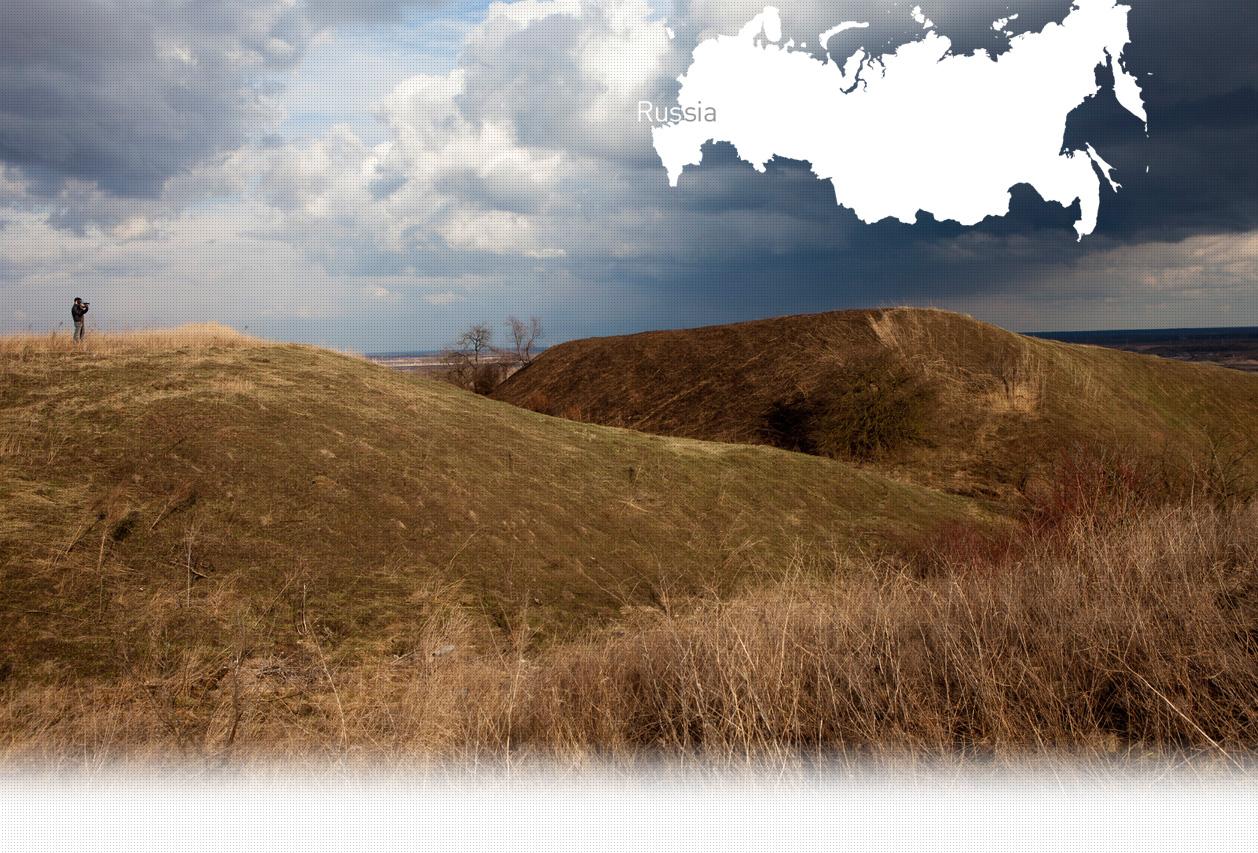

1 Killing site(s)
Nina V., born in 1928: “One day all the Jews were gathered under the pretext of being taken for forced labor. They didn’t suspect anything. They were loaded onto the trucks and taken in the direction of the road. Once the truck turned off the road towards the ravine, they understood what was going on. They started to cry. Oh God, how they cried and screamed. It was unbearable. All the villagers went out on the streets to see what was happening. After the shooting, older men (as there were no young men in the village, they all had gone to front), were requisitioned to dig a pit and bury the corpses. There were many requisitioned men because the pit was big. In all, there were about 250 victims. When I came to the site to take a look I saw the corpses of my two school teachers: Sarah Romanovna and Ida Efremovna. They were lying dead with their children nearby. There were only women in the pit because the men had been taken to Pervomaiskiy, where they were hanged.” (Witness n°903, interviewed in Pecherskaya Buda, on August 19th, 2019)
“On the morning of May 2nd 1942, I was outside and I saw a punitive unit arrive and take all the Jewish residents of the village of Zakharino [village disappeared] in the direction of Buda-Pechersk [today Pecherskaya Buda]. The unit was composed of 27 men, including seven Germans and twenty policemen. The district chief, Chevandin, and the head of the police, Bobkov, were among them. Half an hour later we heard the gunshots. Afterwards, we found out that 263 civilian Jews had been shot. I don’t know the names of the Germans and policemen.» [Deposition of a local villager,Uliana Ch., 44 years old, given to the Soviet Extraordinary Commission (ChGK) on April 7th 1944; RG.22-002M: GARF 7021- 44-634, p.662]
The village of Zakahrino which was initially established as a Jewish settlement, and no longer exists. The last houses were destroyed in 1980. The closest village is Pecherskaya Buda, located 90km (56 miles) south of Smolensk. In 1847, 538 Jews lived in Zakarino and make up the majority of the total population. There were two synagogues, none of which was preserved. The Jewish children had their own Yiddish school, but in 1930s it was transformed in a Russian school where Jewish and non-Jewish children studied together. The majority of Jews lived off agriculture. However, some of them were involved in small scale trade or artisanal manufacturing, such as shoemaking or tailoring
Zakharino was occupied by the Germans on August 1st 1941. Before the occupation, many Jewish refugees arrived to Zakahrino from Belarus, while only a small part of local Jews managed to evacuate to the East. The anti-Jewish measures were implemented shortly after the occupation. The Jews were subjected to theft, humiliations and different restrictions on daily life. In the summer of 1941, eight local Jewish men were arrested and hanged in the centre of the village.
The ghetto was created in October 1941 and housed about 300 Jews. According to the local residents interviewed by Yahad - In Unum, the ghetto was created on the street where the Jews had previously resided. It was only fenced in with barbed wire. Although it was forbidden to leave its territory, many Jews sneaked out of the ghetto at night to look for food. A Jewish council and a local police were also created.
The ghetto was liquidated on May 2nd 1942. A German punitive from Khislavichi unit accompanied by local police rounded up the Jews under the pretext of being taken to work. They were taken northeast of the village of Zakahrino in the direction of Pecherskaay Buda where they were shot in the ravine. Before being shot, some of them stripped naked, while others were able to keep on their underwear. According to Yahad’s witness YIU/902R, the shooting was conducted by policemen. The Germans only surveyed the execution. According to the same witness, Jewish men from Zakahrino weren’t shot in Pecherskaya Buda, they were taken to be shot in Pervomaiskiy. The village of Zakahrino was burned down as the Germans retreated.
Do you have additional information regarding a village that you would like to share with Yahad ?
Please contact us at contact@yahadinunum.org
or by calling Yahad – In Unum at +33 (0) 1 53 20 13 17